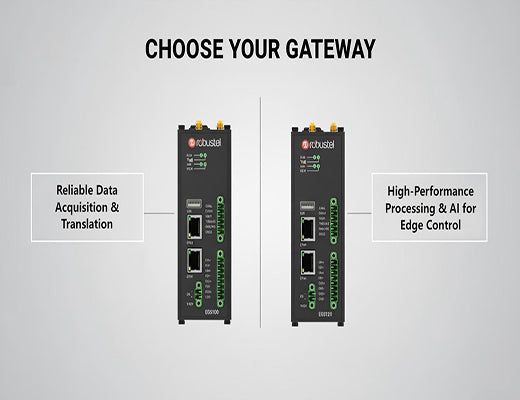
The Role of an Edge Gateway in CNC Router Data Acquisition
|
|
Time to read 5 min
|
|
Time to read 5 min
This guide details the critical role of an edge gateway in CNC router data acquisition. While your CNC router holds valuable data, getting that data out reliably and securely requires a specialized intermediary. An industrial edge gateway acts as this essential bridge, performing three key functions: translating complex machine protocols, processing data locally, and securely transmitting it to your IT systems. Understanding these functions highlights why an edge gateway is non-negotiable for any serious CNC router connectivity project.
Direct connection between a CNC router and IT systems is often impractical due to protocol incompatibility, security risks, and data overload.
An edge gateway solves these problems by acting as a dedicated protocol translator, data processor, and security buffer.
Key functions include: speaking native CNC protocols (like FOCAS or Modbus), normalizing data into a standard format (like JSON/MQTT), optionally performing local analytics, and creating a secure VPN tunnel.
A purpose-built edge gateway (like the Robustel EG series) is the most reliable and efficient hardware for unlocking your CNC router's data potential.
You know your CNC router holds a treasure trove of data that could optimize production and prevent downtime. You also know you need to get that data onto your network or into the cloud. But how, exactly, do you bridge that gap? Can you just plug a network cable from your machine tool directly into your corporate network?
Let's be clear: absolutely not. Connecting sensitive, operational machinery directly to an IT network without a proper intermediary is a recipe for technical headaches and massive security vulnerabilities. You need a specialized translator and security guard standing between these two worlds. That role is played by the industrial edge gateway.

Attempting to directly link your CNC router's controller to your IT systems or the cloud runs into several major roadblocks:
An industrial edge gateway is purpose-built to overcome all these challenges. It sits physically close to the CNC router and acts as an intelligent intermediary.
The 'aha!' moment is realizing the gateway performs multiple critical roles simultaneously.
This is the most fundamental role. The edge gateway uses its built-in software drivers and physical interfaces (Ethernet, RS485) to:
The gateway doesn't just forward raw data; it refines it.
The gateway acts as a critical security buffer.

The edge gateway is far more than just a simple connectivity device when it comes to CNC router data acquisition. It is the essential multi-tool that safely bridges the OT/IT divide. By acting as an expert translator, an intelligent processor, and a vigilant security guard, it transforms the complex challenge of machine connectivity into a manageable, reliable, and secure process. Investing in the right edge gateway is the single most important step towards unlocking the true data potential of your CNC router.

A1: Yes, in almost all cases. Even with an Ethernet port, the CNC likely speaks an industrial protocol (like Profinet or FOCAS) that your IT systems don't understand. More importantly, the gateway provides the critical security isolation (firewall, VPN) needed to protect your machine tool from network threats.
A2: A simple protocol converter typically only translates one specific protocol to another (e.g., Modbus RTU to Modbus TCP) and lacks processing power, security features, and remote management capabilities. An edge gateway is a full-fledged industrial computer with an operating system, capable of handling multiple protocols, running custom applications (edge computing), providing robust security, and being managed remotely via the cloud.
A3: It depends on your needs. For basic data acquisition and protocol conversion from one or two machines, the EG5100 is a reliable and cost-effective choice. If you need to connect multiple machines, require higher processing power for local analytics or AI (like tool wear monitoring), or need 5G connectivity, the EG5120 is the more powerful platform.